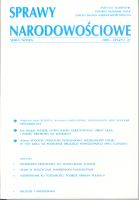Islam w politycznie suwerennym Kazachstanie
Islam In Politically Sovereign Kazakhstan
Author(s): Paweł JessaSubject(s): Cultural Essay, Political Essay, Societal Essay
Published by: Instytut Slawistyki Polskiej Akademii Nauk
Keywords: Kazakhstan - political Islam; collective memory;
Summary/Abstract: Islam plays a significant role in Kazakh society and is now considered a part of the national heritage. Current developments within the Muslim community of that country suggest that Islamization has entered a new stage. The first independent muftyat was created in Kazakhstan in 1990, and the growth of a “spiritual infrastructure” in the state has followed. Islamization is a complex phenomenon, and each of its various currents aspires for a dominant position. Kazakhstan's Muslims, who as a majority have only recently “discovered” Islam, have a wide choice of options in the newly established “market of ideas.” The process of Re-Islamization assumes different forms. One is represented by the activity of groups which act under the influence of charismatic leaders, as in the case of Aq jol. The leaders of Aq jol emphasize the Muslim nature of the group, which is nevertheless open to representatives of other confessions (mostly Christian) and to nationalities other than Kazakh. Religious practices (including healing) among Kazakh Muslims reveal a combination of Islamic tradition and non-Islam traditions in the region. Another current process is the revitalization of Sufi rituals of the Brotherhood of Yasawihyya. Its leader, who returned to Kazakhstan from Afghanistan in the early 1990s, attracted a group of disciples, mostly young people, and opened a madrasah in Almaty. He emphasizes the importance of ritual. President Nazarbajev, who is a proponent of Kazakh political Islam, has contributed to the popularity of Sufi ideology and practice. But Sufism is losing its former influence, as its rebirth is taking place in a different intellectual and social milieu.
Journal: Sprawy Narodowościowe
- Issue Year: 2005
- Issue No: 27
- Page Range: 149-170
- Page Count: 22
- Language: Polish

